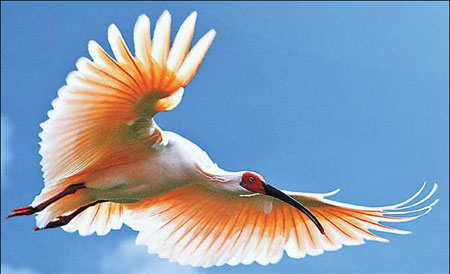
At one time, the Crested Ibis was widespread in Japan, China, Korea, Taiwan, and Russia. It has now disappeared from most of its former range. The last wild Crested Ibis in Japan died in October 2003, with the remaining wild population found only inShaanxi province of China until reintroduction of captive bred birds back into Japan in 2008. They were previously thought to be extinct in China too, until 1981 when only seven ibises were seen in Shaanxi, China.
Extensive captive breeding programs have been developed by Japan and China to conserve the species. They were put on the State Protection List in China. Also, for the past 23 years, China has bred and protected the species. In 2002, there was a total of 130 colonies in China. Northwest Shaanxi province's research center has a history of 26 Crested Ibis fledglings including artificial, and natural incubation. On July 31, 2002, five out of seven Crested Ibis chicks hatched at an incubation center in northwest Shaanxi province. This was one of the latest records and highest record ever recorded of chicks that hatched. The parents of the chicks were chosen from 60 ibis pairs raised at that research center.[2]
WIKIPEDIA